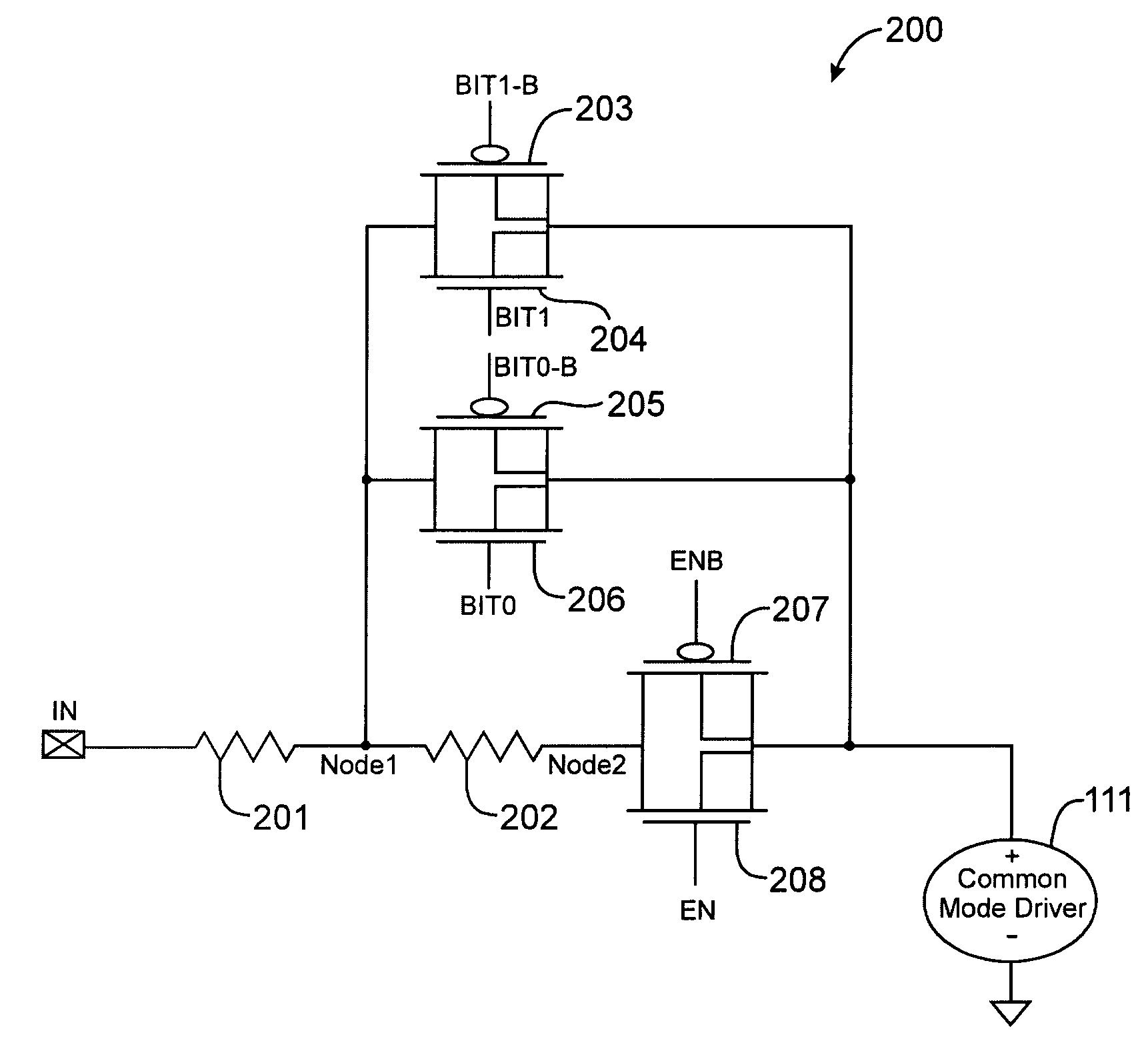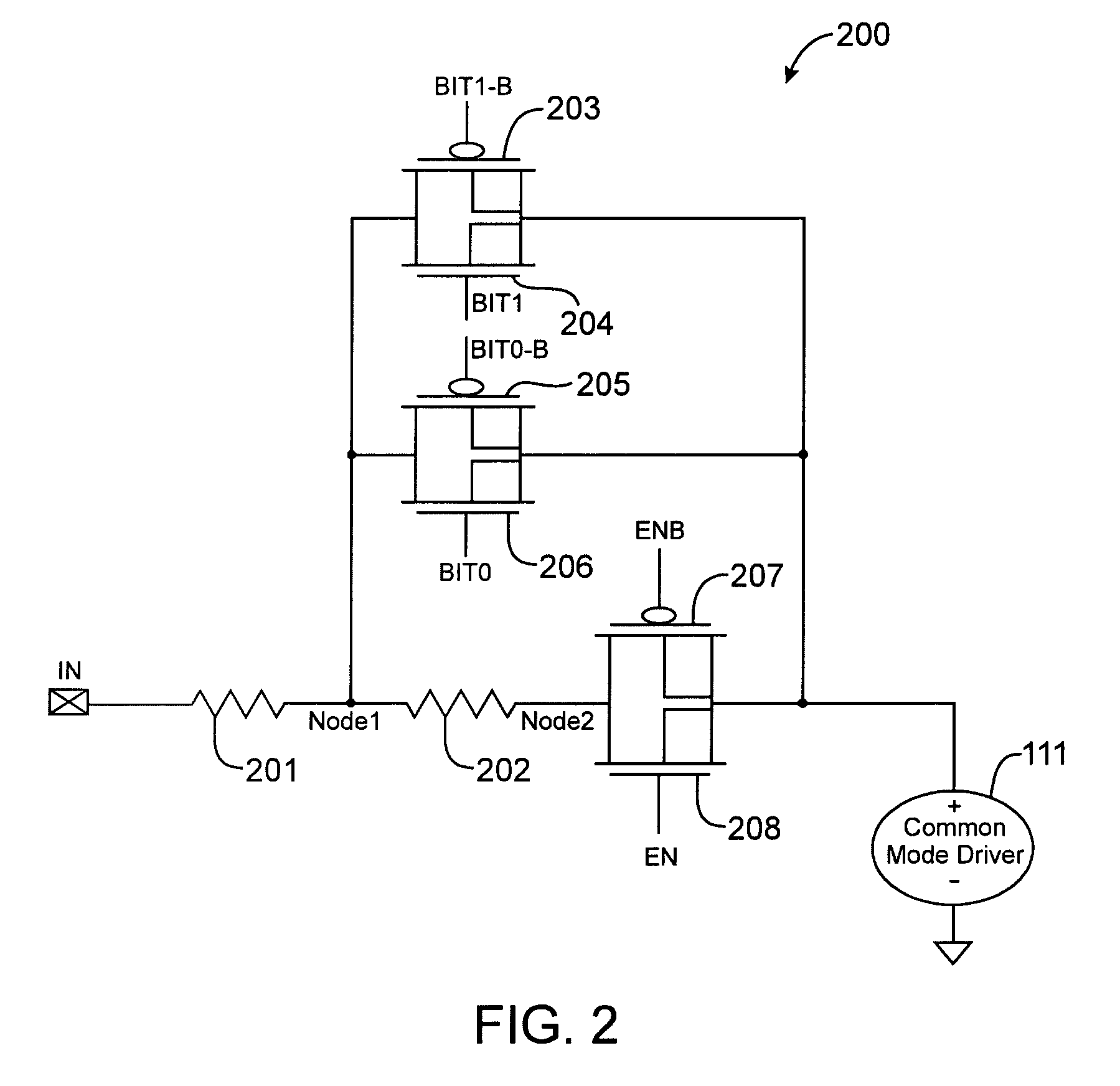Techniques for reducing leakage current in on-chip impedance termination circuits
a technology of termination circuit and leakage current, which is applied in logic circuit coupling/interface arrangement, pulse technique, baseband system details, etc., can solve the problems of degrading overall signal quality, cumbersome and costly use of external resistors for termination purposes, and signal distortion. , to achieve the effect of reducing the leakage curren
- Summary
- Abstract
- Description
- Claims
- Application Information
AI Technical Summary
Benefits of technology
Problems solved by technology
Method used
Image
Examples
Embodiment Construction
[0015]FIG. 1 illustrates an on-chip programmable termination impedance circuit 100 according to an embodiment of the present invention. Termination impedance circuit 100 is formed on an integrated circuit such as an application specific integrated circuit (ASIC), a programmable logic device (PLD), a field programmable gate array (FPGA), a programmable gate array (PLA), or a configurable logic array.
[0016]Termination impedance circuit 100 is coupled between two differential input / output (IO) pins INP and INN. IO pins INN and INP are driven by driver circuitry (not shown) between two supply voltage levels. The two supply voltage levels include a high supply voltage, VCC, and a low supply voltage, Ground.
[0017]Termination impedance circuit 100 provides impedance termination to transmission lines coupled to IO pins INN and INP. Termination impedance circuit 100 can also provide impedance matching to transmission lines coupled to IO pins INN and INP. The impedance of circuit 100 can be s...
PUM
 Login to View More
Login to View More Abstract
Description
Claims
Application Information
 Login to View More
Login to View More - R&D
- Intellectual Property
- Life Sciences
- Materials
- Tech Scout
- Unparalleled Data Quality
- Higher Quality Content
- 60% Fewer Hallucinations
Browse by: Latest US Patents, China's latest patents, Technical Efficacy Thesaurus, Application Domain, Technology Topic, Popular Technical Reports.
© 2025 PatSnap. All rights reserved.Legal|Privacy policy|Modern Slavery Act Transparency Statement|Sitemap|About US| Contact US: help@patsnap.com



